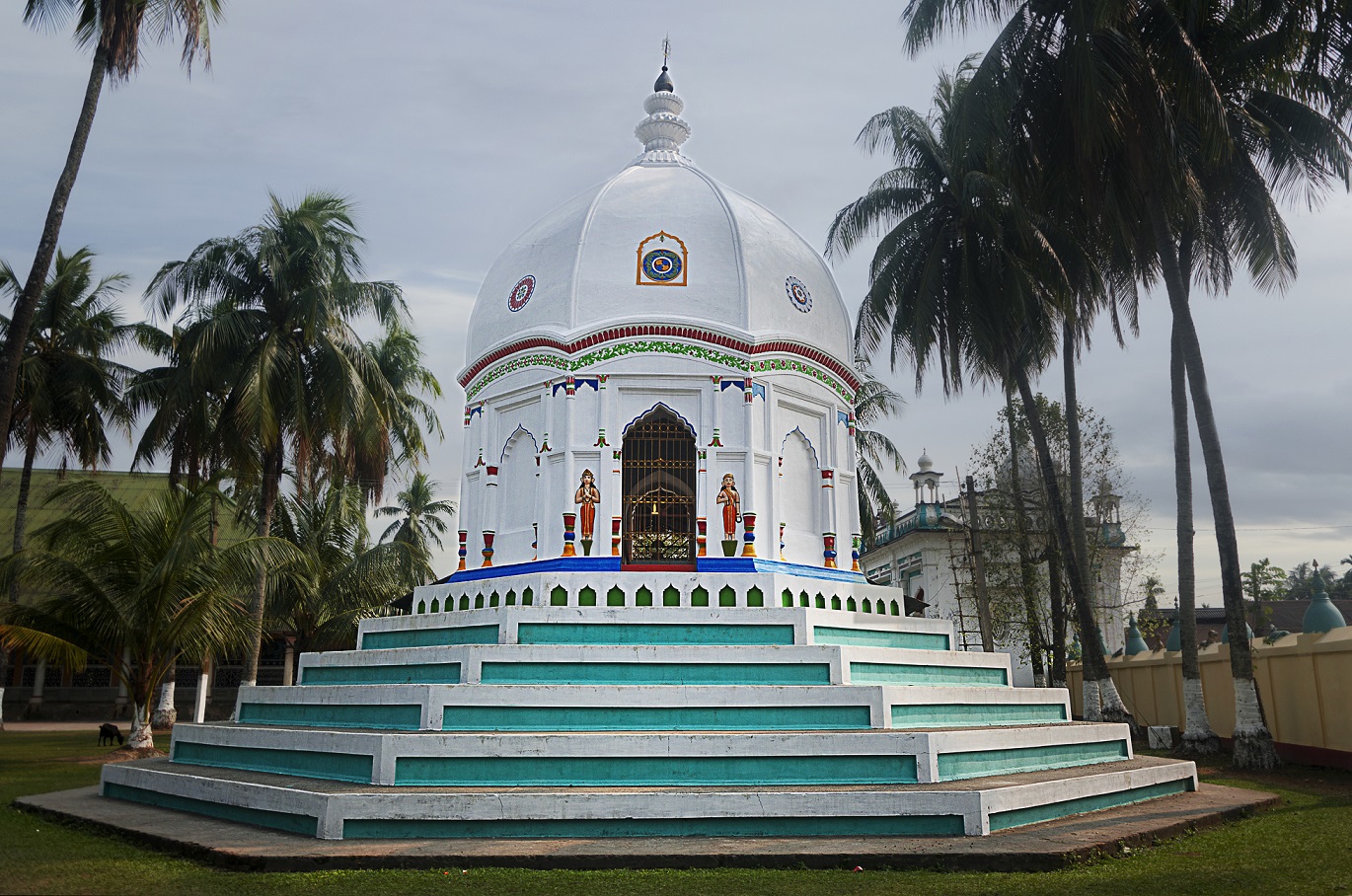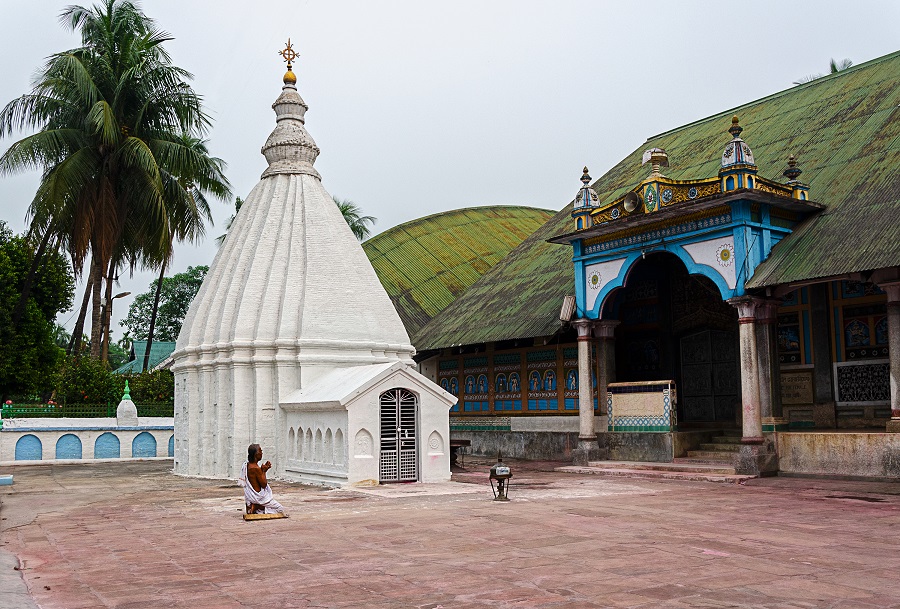The buildings within the Satra premise are architectural achievements in its own right. The Kirtan Ghar is considered to be the largest in Assam. The Three Guri Asanas are placed in this buildings in honour of Shrimanta Sankardeva, Shri Madhavdeva and Shri Badula Ata. The two Satradhikars sit behind the Asanas to hold Nam-Prasangas regularly. Numerous buildings are located within the premise covering an area of 20 Bighas.
 Barpeta is the most adorable sacred place among the three religious states of Neo Vaisnavite movement in Assam. Mathuradas Burha Aata has become the first spiritual- religious head or satradhikar of this sacred place. Mahapurusha Madhabdeva founded the Barpeta Satra or Kirtanghar in 1583 A.D., and he named it as Rongialgriha. Barpeta Satra, popularly known as Barpeta Kirtanghar is a large and one of the best satra of Assam. The architecture and infrastructure of this satra is adorable and unique. There is a well marked boundary and three batchoras outside it. There is a big entrance gate popularly and locally known as 'dalan' situated at the front, another two entrance gates are also there in both the Eastern and Western sides. There is big prayer-house or Kirtanghar, Manikut or Bhajghar is attached with it. There are two large pillars at the front side of the kirtanghar made of ocimum tree.
Barpeta is the most adorable sacred place among the three religious states of Neo Vaisnavite movement in Assam. Mathuradas Burha Aata has become the first spiritual- religious head or satradhikar of this sacred place. Mahapurusha Madhabdeva founded the Barpeta Satra or Kirtanghar in 1583 A.D., and he named it as Rongialgriha. Barpeta Satra, popularly known as Barpeta Kirtanghar is a large and one of the best satra of Assam. The architecture and infrastructure of this satra is adorable and unique. There is a well marked boundary and three batchoras outside it. There is a big entrance gate popularly and locally known as 'dalan' situated at the front, another two entrance gates are also there in both the Eastern and Western sides. There is big prayer-house or Kirtanghar, Manikut or Bhajghar is attached with it. There are two large pillars at the front side of the kirtanghar made of ocimum tree.
 The satra have Math, Doulgriha, Jogmohangriha, Rangamancha, Adhayanagar (Bhagawat study hall), two guest houses, and several huts of celibate devotees inside its campus. The Patchang Ghar, animal cage (deer keeping place), Khatakhati (staircases) and pond are some of the unique organs of the satra. It was Gopal Tanti, a devotee and head of weavers, who brought Madhabdeva to Barpeta from Sundaridiya. After establishment of Barpeta Satra Madhabdeva arranged to perform a bhaona (drama in single act) named 'Kotora Khelowa' at the satra, several devotees like Hariballav Aatoi, Jadumani Aatoi, Jonardon Aatoi, Gopal Aatoi, Bishnu Aatoi, Sri Ram Aata and Gopal Tanti helped Madhabdeva in performance of the bhaona. Gopal Tanti took spiritual refuge under Madhabdeva and was renamed as Mathuradas Burha Aata at the age of 83. That’s why he was called as Burha Atta. And at the age of 107 years in 1597 A.D. Mathuradas Burha Aata took charge as the first Satradhikar of Barpeta Satra. Mathuradas started some reforming measures at the satra and its adjoining areas outside the satra. Skilled artisans, culture-workers and job-oriented communities were patronage to settle around Barpeta Satra. Rows of huts or ‘hati’s (sub-areas) were formed where all these people were settled to stay. Burha Aata introduced Choiddha Prasanga' or prayers in fourteen successive sittings from the early morning to evening at Barpeta satra. Democratic system of voting to elect the Satra's functionaries (Burha Satriya, Deka Satriya and members) is also introduced by Burha Aata. The ideals of Eka-Sharan-Hari Nam Dharma are found preserved through traditional rituals of this satra. Barpeta Satra is an ideal symbol of Nika Samhati sub-sect of Assamese Neo-vaishnavism. Doul festival is the biggest festival observes at Barpeta Satra. The Ahom king Siva Singha donated land grants to the Satra Satras of Barpeta District.
The satra have Math, Doulgriha, Jogmohangriha, Rangamancha, Adhayanagar (Bhagawat study hall), two guest houses, and several huts of celibate devotees inside its campus. The Patchang Ghar, animal cage (deer keeping place), Khatakhati (staircases) and pond are some of the unique organs of the satra. It was Gopal Tanti, a devotee and head of weavers, who brought Madhabdeva to Barpeta from Sundaridiya. After establishment of Barpeta Satra Madhabdeva arranged to perform a bhaona (drama in single act) named 'Kotora Khelowa' at the satra, several devotees like Hariballav Aatoi, Jadumani Aatoi, Jonardon Aatoi, Gopal Aatoi, Bishnu Aatoi, Sri Ram Aata and Gopal Tanti helped Madhabdeva in performance of the bhaona. Gopal Tanti took spiritual refuge under Madhabdeva and was renamed as Mathuradas Burha Aata at the age of 83. That’s why he was called as Burha Atta. And at the age of 107 years in 1597 A.D. Mathuradas Burha Aata took charge as the first Satradhikar of Barpeta Satra. Mathuradas started some reforming measures at the satra and its adjoining areas outside the satra. Skilled artisans, culture-workers and job-oriented communities were patronage to settle around Barpeta Satra. Rows of huts or ‘hati’s (sub-areas) were formed where all these people were settled to stay. Burha Aata introduced Choiddha Prasanga' or prayers in fourteen successive sittings from the early morning to evening at Barpeta satra. Democratic system of voting to elect the Satra's functionaries (Burha Satriya, Deka Satriya and members) is also introduced by Burha Aata. The ideals of Eka-Sharan-Hari Nam Dharma are found preserved through traditional rituals of this satra. Barpeta Satra is an ideal symbol of Nika Samhati sub-sect of Assamese Neo-vaishnavism. Doul festival is the biggest festival observes at Barpeta Satra. The Ahom king Siva Singha donated land grants to the Satra Satras of Barpeta District.
